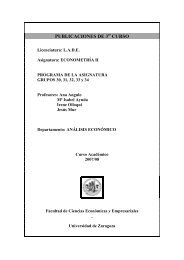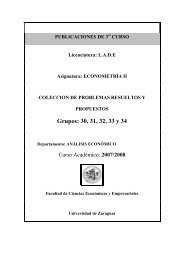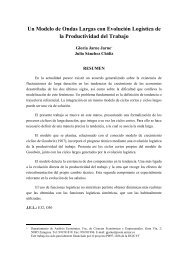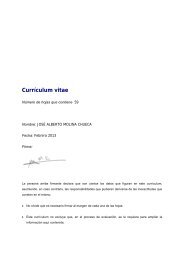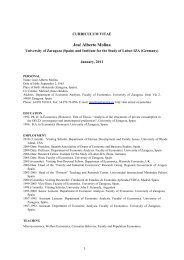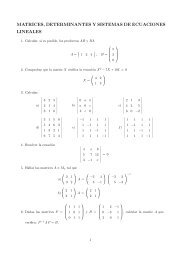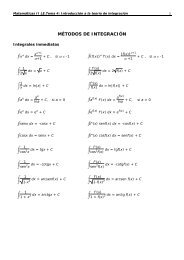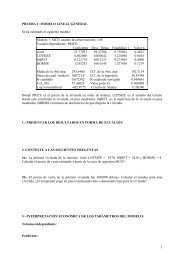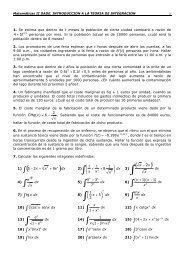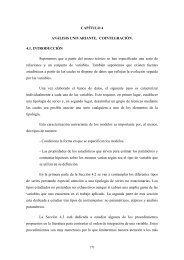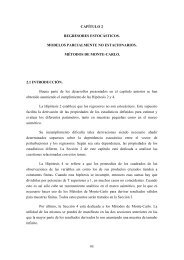tema 8:regresión con variables no estacionarias - Departamento de ...
tema 8:regresión con variables no estacionarias - Departamento de ...
tema 8:regresión con variables no estacionarias - Departamento de ...
You also want an ePaper? Increase the reach of your titles
YUMPU automatically turns print PDFs into web optimized ePapers that Google loves.
3.- Alternativas <strong>de</strong> especificación y estimación<br />
1.- SERIES ESTACIONARIAS: Se especifica un mo<strong>de</strong>lo<br />
en niveles y se estima por los procedimientos habituales.<br />
2.- SERIES NO ESTACIONARIAS DE DISTINTO<br />
ORDEN: la ecuación <strong>de</strong> <strong>regresión</strong> carece <strong>de</strong> sentido.<br />
3.- SERIES NO ESTACIONARIAS Y NO<br />
COINTEGRADAS: Si dos series son integradas <strong>de</strong>l mismo or<strong>de</strong>n<br />
pero los residuos <strong>no</strong> son estacionarios, es el caso <strong>de</strong> <strong>regresión</strong><br />
espúrea. En tal caso se recomienda especificar un mo<strong>de</strong>lo en<br />
primeras diferencias y se estima por MCO.<br />
Δ y = βΔ<br />
x + u<br />
t<br />
4.- SERIES NO ESTACIONARIAS Y<br />
COINTEGRADAS: Si las dos <strong>variables</strong> son <strong>no</strong> <strong>estacionarias</strong>,<br />
integradas <strong>de</strong>l mismo or<strong>de</strong>n y los residuos <strong>de</strong> la <strong>regresión</strong> entre<br />
ambas son estacionarios, <strong>de</strong>cimos que están cointegradas. En<br />
dicho caso se especifica el mo<strong>de</strong>lo <strong>de</strong> Mecanismo <strong>de</strong> Corrección<br />
<strong>de</strong>l Error, MCE, (Engle y Granger (1987)).<br />
Δ t = Δxt<br />
−α<br />
( yt<br />
− 1 − β1<br />
− β2<br />
xt<br />
−1<br />
y γ ) + ε<br />
t<br />
t<br />
t<br />
7




